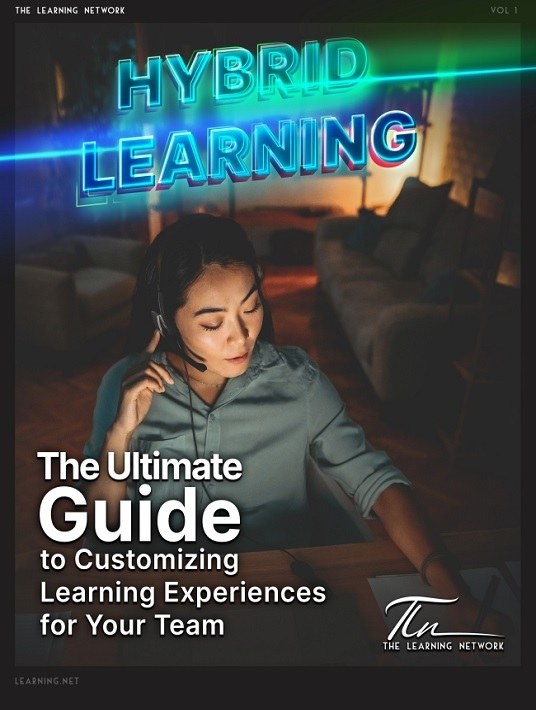How Do You Implement A Hybrid Learning Strategy?
We’ve already discussed the benefits of hybrid learning, covered critical areas of consideration, and walked through a case study. So, where can you start? Here are 5 simple steps to guide you.

5 Steps To Introduce A Hybrid Learning Program
1. Conduct A Needs Assessment
Do a thorough evaluation of your existing educational content and needs. Examine your learning community to ensure the planned interventions will meet their requirements. Answer questions like: Why are we doing this training? What are the skills required? What gaps (if any) currently exist? Your needs assessment will drive the choice of delivery method and modality(s) used to educate. In making this decision, you’ll need to determine whether you have the capabilities available in-house to meet those needs or whether you will require an outside partner.
2. Determine Priorities
Switching to a hybrid training model is no small undertaking. Rather than trying to do everything at once, you will be more successful by taking smaller, more manageable steps and setting priorities. This begins by asking What are we going to create and when? By setting priorities, you can also create content more efficiently. For example, creating an eLearning course first might make it easier to (later) create videos, graphics, and other content forms.
3. Assign Responsibilities
Be clear about who owns what for your program. For example, if you are using an agency partner, what are they responsible for providing? What will your responsibilities be as a client partner? Being clear helps ensure budget and scheduling efficiencies.
4. Create A Roll-Out Strategy
What is your plan to execute your hybrid learning approach? How will you communicate this to your internal learners and team? Where will the assets live? How will your learning program become integrated into a learner’s day-to-day? Your roll-out strategy will need to address these questions and more.
5. Track ROI
It can be difficult to measure the full effectiveness of learning programs. However, determining baseline numbers before your program rolls out and then measuring those same numbers 6-10 months later will give you an idea of how well it’s working or not.
Hybrid Learning: The Future Of L&D
Hybrid learning is the future, and the future is now. Continued success in L&D and eLearning initiatives means meeting hybrid workers where they are today: online, in the office, and with versatile options in between. At The Learning Network, we provide a vast array of training support, from consultative advice to program design and delivery. Whatever your organizational needs, we are here to make the world of traditional and eLearning simple, straightforward, and successful.
Conclusion
Download the eBook Hybrid Learning: The Ultimate Guide To Customizing Learning Experiences For Your Team by The Learning Network to discover how you can launch personalized programs for your remote workforce and overcome the limitations of hybrid learning. You can also join the webinar to explore a roadmap for customizing learning experiences with a leading industry expert.









